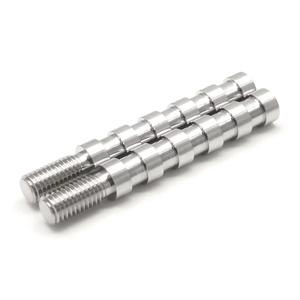Tempering Of Shafts
Shafts tempering treatment is mainly achieved by adjusting the internal structure and properties of the material to improve wear resistance.
1. Eliminate internal stress and brittleness
Reason: During the machining process of Shafts, especially during quenching, internal stress and brittleness may occur, which may reduce the wear resistance of the shaft.
Effect: Tempering treatment changes the internal structure of the shaft through heating and insulation, thereby eliminating or reducing internal stress and brittleness, laying the foundation for improving wear resistance.
2. Adjust mechanical properties
Hardness and wear resistance: Hardness is one of the important factors affecting wear resistance. Proper tempering treatment can reduce hardness to a certain extent, but at the same time improve toughness. This “soft but not brittle” state is beneficial for improving wear resistance.
Low temperature tempering (about 150-250 ℃): On the basis of maintaining high hardness and wear resistance, reduce quenching stress and improve toughness. This treatment is suitable for shafts that require high hardness and wear resistance.
Medium temperature tempering (approximately 350-500 ℃): Obtaining high elasticity and yield strength while maintaining a certain level of wear resistance. Suitable for shafts that require certain elasticity and wear resistance.
3. Stable size
Reduce deformation: Through tempering treatment, the size of the shaft is stabilized, reducing wear caused by size changes during use.
4. Refine grain size
Tempering refinement: At an appropriate tempering temperature, the internal grains of the shaft will be refined, which helps improve the mechanical properties of the material, including wear resistance.
5. Eliminate carbide aggregation
The influence of carbides: During the quenching process, carbides may aggregate and form hard and brittle areas, reducing wear resistance.
Tempering effect: Tempering treatment can redistribute carbides, reduce aggregation, and improve wear resistance through heating and insulation.
6. Comprehensive effect
Tempering temperature and time: The specific tempering temperature and time need to be determined based on the material, operating environment, and performance requirements of the shaft. Generally speaking, through reasonable tempering treatment, wear resistance can be significantly improved while ensuring other properties of the shaft, such as strength and toughness.
Shafts tempering treatment can effectively improve the wear resistance of the shaft by eliminating internal stress and brittleness, adjusting mechanical properties, stabilizing size, refining grains, and eliminating carbide aggregation. This treatment is particularly important for shafts that need to withstand high loads and wear.
